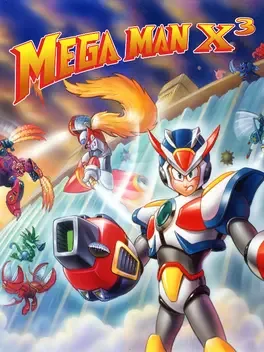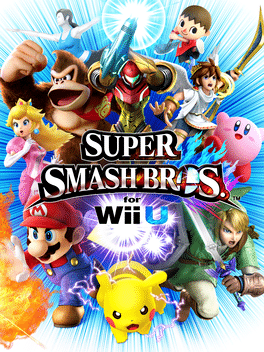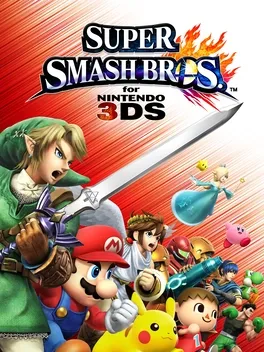(Originally published to Glitchwave on 5/17/2024)
[Image from glitchwave.com]
Duke Nukem 3D
Developer: 3D Realms
Publisher: FormGen
Genre(s): First-Person Shooter
Platforms: PC, MAC, PS1, Saturn, N64
Release Date: January 29, 1996
One additional point to Duke Nukem 3D’s charisma is giving the titular character a voice to accentuate the personality of the muscle-bound figure behind those sunglasses so dark that the frames look like van windows. Admittedly, Duke Nukem isn’t the most dynamic or relatable character gaming has to offer. In fact, his uber-macho persona is so exaggerated that it comes across as a parody of the 1980s and 1990s action heroes that oozed pure testosterone from every sweating pore. But what a parody Duke is! If Bruce Willis, Sly Stone, Jean Claude Van Damme, and Steven Segal all ejaculated into a petri dish and the collective of hyper-masculine leading movie man semen was fertilized with an egg, the spawn conceived by this experimental breeding method still wouldn’t be as badass as Duke Nukem. Remember all of those Chuck Norris jokes that circulated around the internet in the latter half of the 2000s? All those tongue-in-cheek tributes to the Walker, Texas Ranger star and martial artist being an indestructible demigod of righteousness would have easily been just as applicable to Duke Nukem. Duke’s as rugged as a superhuman steel worker and approaches all hostility directed at him by beastly extraterrestrial invaders without flinching and quivering that clenched toothy grin of his. Duke is also a connoisseur of carnal pleasures with the ladies, and the harems he regularly coordinates would knock Wilt Chamberlain off as the supreme champion of the (sexual) scoring scoreboard. My favorite aspect of Duke Nukem as a character is that he’s a God at spewing one-liners. The game will automatically pull the Duke Nukem doll string at every other step he takes, and the bodacious single-sentenced lines of dialogue he utters with Jon St. John’s gravelly, monster truck rally radio voice providing the vocal delivery is music to my ears. Arguably, Duke Nukem’s golden quips are the aspect of this game that have been immortalized the deepest in the gaming zeitgeist thanks to their continual persistence as soundbites. I realize that since modern gaming journalism has expanded the conversation of social consciousness regarding the medium, Duke Nukem is a character commonly indicted as the epitome of a vicarious outlet to a misogynistic male-power fantasy, and I can’t deny that there is plenty of evidence to support the validity of this claim. Still, I refute this smudge to Duke’s integrity by stating that there might have been a time when gamers thought Duke Nukem was cool, but there was never a time when we all took him seriously. Duke Nukem is such an ostentatious embodiment of gaming camp that he reverts back around to actually being the coolest motherfucker ever depicted in pixels or polygons. I can’t say for certainty if the developers intended for Duke Nukem to be perceived through a lens of irony back in the 90s, however.
Despite his retrospective controversies, I still believe that Mr. Nukem is still an upstanding guy with a sense of justice in his heart. After all, the overarching objective of Duke Nukem 3D is an altruistic one, rescuing all the earthling babes that those alien bastards have abducted and reuniting them into the safe and protective arms of human warmth (his own, probably wrapped around them while they stroke his ironclad abs with their fingers). Whether it’s all human females, ones of a reproductive age bracket, or just the sexy ones aged 18-30 with supple breasts (sort of) is unclear. Regardless, Duke is willing to risk his biscuit on a valiant mission to retrieve the fairer half of Earth’s population from invading scum from outer space. Duke’s a lone wolf NSA assassin: the spitting image of J. Edgar Hoover’s wet dreams come to realization in an interactive medium. Or, Duke is not on a mission of government defense and is acting out against the alien forces as personal retribution for shooting down his ride en route to Los Angeles. Either or, the aliens have signed their death warrant by provoking the wrath of the last human they’d be able to handle.
Duke’s mission to save all the babes unceremoniously taken from Earth’s soil is divided into four chapters comprising around seven to ten individual levels. Instead of soaking up the sun’s rays in Malibu with a dozen loose, silicone-enhanced women, Duke now has to engage in a citywide firefight with the aliens in “L.A. Meltdown.” Doesn’t sound like Duke’s vacation to the City of Angels was deterred too drastically, no? The invasion at least grants him the opportunity to kick ass and chew bubblegum, which is one of many pop culture references that Duke coopts as a catchphrase. As he’s making mincemeat out of the squadron of alien forces, Duke will leave Los Angeles County to the California-spanning San Andreas fault located east in the desert. “Lunar Apocalypse” sends Duke slightly beyond the skies to a space station orbiting over the Earth, a massive headquarters operated by the alien army. Duke logically assumes that dismantling the oppressive establishment will be a critical blow to the alien opposition, but the eyesore is really a red herring that tests Duke’s gullibility. While Duke was distracted outside of Earth’s atmosphere, the aliens revved their task force to eleven back in LA, which Duke must revisit to remedy the increased rate of chaos in “Shrapnel City.” Without the pushback from Duke for a momentary period, the aliens accomplish their primary goal that coincides with the capturing of Earth’s human females. In the additional final chapter released with the “Atomic Edition” of the game, one candidate from the selection of unwilling female participants is impregnated with the seed of the alien’s queen, and “The Birth” as the chapter’s title connotes the distressful reality that they’ve succeeded. Who’s the lucky lady deemed to have such exceptional ovaries? We don’t know, but she most likely died during childbirth considering the horrifying creature that violently scratched and clawed its way out of her vagina. Because she’s the regal leader of this alien army and an overall abomination, Duke must expunge this matriarchal monstrosity from existence before her first birthday. While the four chapters align with some sort of narrative arc, the order in which the player tackles them is ultimately superfluous because they are given the option to select any chapter in the main menu. Still, what the chapter format provides is thematic cohesion between all of the individual levels. After hopping around several levels in space during the “Lunar Apocalypse” chapter, it genuinely feels as if a significant portion of progress has passed after Duke returns to civilization.
Whether the backdrop is the sunset strip or the outer limits, the levels of Duke Nukem 3D are bonded by a consistent design philosophy. Each level is technically a trek from point A to B, but that simple trajectory will be thwarted constantly by layers upon layers of circuity. A common integral aspect of the convolution is the need to find three key cards that block paths to progression exactly like in Doom. In fact, this general design philosophy reflects Doom’s methods so similarly that it’s practically like peering into a mirror image. Come to think of it, we don’t have any clear evidence that Duke Nukem isn’t the nom de guerre of “The Doom Guy” unmuffled now due to not having to protect himself with that hefty body armor from the oxygenless atmosphere of Mars or the noxious sulfur of Hell. Seeing how uncanny the levels are between the two FPS games, one could reasonably conclude that there’s only room for one king of the roost in this universe, but he’s the same person after all. While Duke Nukem 3D doesn’t make any meaningful strides of innovation to the FPS genre’s design philosophy, it avoids further accusations of cheap imitation of Doom by sprucing up the visuals. The opaque, cryptic visuals were sensible enough for Doom’s esoteric hellscape, as was the enclosed, repetitive dungeon design of Wolfenstein’s castle interior. The environments in Duke Nukem 3D, however, should have some semblance of realism because of its real-world setting, or at least a broad real-world setting for three out of four of the chapters. Hollywood Boulevard and the surrounding areas may not exude that sunny pomp the city is known for, as the invasion has apparently rendered it in nocturnal darkness. Still, the neon glow of an urban metropolis is discernible enough that the player recognizes that the environment is a concrete jungle with all of the familiar iconography. The levels in LA are packed with earthly establishments fitting for a first-world society. Duke will pass through a number of movie theaters, restaurants, office cubicles, and several assortments of bodegas to convey that sense of a lived-in environment. Duke will also find himself visiting strip clubs and the sets of pornographic films. These settings will give him ample room to flaunt his pension for shoving a couple of bucks in every surviving woman’s face, requesting them to “shake it, baby” to fan the flames of outrage. Even when they comply and show him their boobs, his critics are still going to label him as a sexist pig. A few levels in “The Birth” expound on the real-world setting theme by expanding the recurring places of interest into the length of fully-fledged levels. “Duke-Burger” is a fast food joint with the protagonist as its spokesperson, “Shop-N-Bag” is a supermarket that dwarfs the size of any Costco, and “Babeland” is a theme park that looks as if Disney acquired Hooters as one of their properties. Even when the levels in outer space can feasibly get by with minimal visuals in the foregrounds, every backdrop from the living quarters to the desolate docking bays is still beaming with pixelated detail. One recurring section in “Lunar Apocalypse” that is quite striking is the green, veiny corridors stretched over the perimeter of a wall or an entire room that stores the women deemed disposable by the aliens affixed in what look like cocoons made of mucus. Seeing their naked bodies writhing in excruciating discomfort with their feeble dialogue line of “kill me” is more disturbing than anything seen in Doom.
Naturally, the aliens will be a constant hindrance to reaching the goal point in the already convolutedly-mapped levels. While each of these imperialistic, intergalactic pests is all working under the same branch of some military, whatever planet they call home sure does house an eclectic ecosystem of species. Admittedly, the range of alien enemies is another aspect of Duke Nukem 3D that causes more comparisons with Doom. One can spot parallels between specific types of enemies between Duke Nukem 3D and Doom to strengthen the comparisons as well (ie. the Assault Troopers and the Imps and the Octobrains and Cacodemons). The array of enemies will also increase in difficulty as the game progresses. In “LA Meltdown,” Duke will blast through plenty of frail Assault Troopers and the LAPD who have been transformed into rabid boars who brandish shotguns while still wearing their blue uniforms. Some may be horrified by the sight of our boys in blue being overtaken by the aliens in this degrading fashion, but all they really did was swap the interior natures of these officers to their exteriors (this is a joke, please don’t hurt me). In the later chapters, these enemies will be joined by a legion of formidable foes that Duke needs to keep a mindful watch of around every corner. The floating, spherical Assault Commanders will blast rockets at Duke in enclosed spaces, and God help you if you encounter one of the Battlelord Sentries, who are durable enough with their hulking spike-covered armor pads and rail gun/mine launcher hybrid cannon to qualify as a miniboss. Encountering the bosses at the end of each chapter isn’t exactly a cinematic display, but their behemoth bodies will force Duke to dispense all of his ammunition into them. I especially enjoy the Overlord boss that climaxes “Lunar Apocalypse'' because Duke’s fatality maneuver that finishes off this boss for good sees him literally ripping his head off and shitting down his neck. Duke does not make idle threats, and the evidence of one of his most quoted sayings here is uproariously funny. For as extensive as Duke Nukem 3D’s enemies are, the game never overwhelms the player with an overabundance of them in one spot as a level gimmick like Doom tended to do.
Because every enemy spans a broad range of offensive and defensive attributes, Duke’s arsenal needs to match their eclecticism appropriately. Fortunately, as I’ve alluded to before, Duke’s as strapped as a Pee-Wee soccer team in a minivan. Of course, Duke’s first few weapons cover the basic firearms requisite for all FPS protagonists. The pistols, shotgun, and multispread chain gun are all effective in their own ways, but the joy of combat really kicks off after the first few levels. Grenades are great in situations where bushels of enemies in close quarters must be obliterated simultaneously, but the volatile nature of their timed impact can sometimes result in fatal cases of friendly fire. Why not take total control over the impact with pipe bombs, which always prove to be efficient and relatively more precise? Accompanying the RPG in the category of projectile explosive power is the Devastator weapon which fires several rounds of mini rockets with the fire rate of a machine gun. Laser Trip Bombs can be applied to upright surfaces to punish unobservant enemies, but sticking these to the walls while enemies are shooting at Duke isn’t exactly a practical method of combat. The special weapons that defy the laws of physics are the ones that are especially fun as one can imagine, and they’re surprisingly just as useful. The Shrinker weapon will reduce almost any common enemy to the size of a mouse, and they’ll tremble in fear before Duke pulverizes them with the crushing might of his foot. Duke’s left boot also comes into play after using the Freezethrower, the elemental opposite of a flamethrower that solidifies an enemy in solid ice before Duke shatters them into pieces. Alternately to the Shrinker, the Expander inflates an enemy to the point of bursting like a bomb that impacts all enemies directly around them. Duke Nukem may not possess something as awe-strikingly destructive as the BFG, but each weapon he carries is satisfying to use and will splatter the brains of enemies all over the streets of LA and beyond.
Duke Nukem is generally easier than the FPS games that influenced it on a fundamental level. As I’ve stated before, the pushback from enemies is relatively mild and manageable, unlike the feverish onslaught of Hell’s forces to contend with in Doom. However, the margin of error in Duke Nukem 3D is also razor thin, erasing all level progress made upon dying and making the player revert back to the beginning. This measure isn’t any less harsh here than it is in other FPS games that share the same sense of punitive discipline. On one hand, health kits of varying quantities are plentifully scattered across each level. This convenience also pertains to the array of items such as the mobile health kit and the protective resources like the boots and scuba gear to prevent Duke from harming himself with environmental hazards or drowning respectively. Duke can even restore his health by ten points by taking a whizz whenever he comes across a bathroom, and can fully restore his status by slurping the gushing pipe water upon breaking a toilet or urinal. The lethargic pace of the healing will skirt Duke’s patience, however, and it’s just kinda gross. With all of the liberties one can take to stave off the stiff death penalty, it all tends to be compromised anyway in some situations. God forbid Duke ever gets squished, and there are more cavernous pits to accidentally tumble down than there ever were on the empty planes of Mars or Hell. I understand that these levels are intended to be completed quickly, and every restart will prove quicker after every failure through familiarity. Still, I’ve always vocalized how unfair it is to send the player back to whence they started for any type of game, and the FPS genre is no exception.
As far as the oldest of the old-school FPS games are concerned, Duke Nukem 3D shines the brightest. This metaphor could include but is not limited to the scrupulous detail implemented to give the player reasonably perceptible environments or the intrepid attitude of its GigaChad protagonist that outshone the silent avatars that already flooded the genre in its early period. Duke Nukem 3D still has some jarring elements common across the early examples of the FPS genre, but I can confidently declare that its issues are the sins of the father. Some may chalk up Duke Nukem 3D’s legacy as channeling Doom under a different name, bolstering shallow attributes such as presentation and not much else: Au contraire, my skeptical friends. Duke Nukem 3D’s graphical sheen and vibrant energy make the FPS more joyous and accessible, which is certainly a stride in the genre’s evolution.
Hail to the king, baby!






